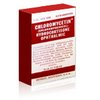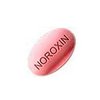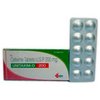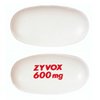 | Chloromycetin Active Ingredient: Chloramphenicol Chloramphenicol is used to treat serious infections in different parts of the body. |
INDICATIONS
Chloromycetin is used for treating serious infections caused by certain bacteria. Chloromycetin is an antibiotic. It works by killing or slowing the growth of sensitive bacteria.
INSTRUCTIONS
Use Chloromycetin as directed by your doctor.
- Chloromycetin is best taken with a full glass (8 ounces) of water on an empty stomach (either 1 hour before or 2 hours after meals), unless otherwise directed by your doctor.
- To clear up your infection completely, continue using Chloromycetin for the full course of treatment even if you feel better in a few days.
- If you miss a dose of Chloromycetin, use it as soon as possible. Then use your doses at evenly spaced times as directed by your doctor. Do not use 2 doses at once.
Ask your health care provider any questions you may have about how to use Chloromycetin.
STORAGE
Store Chloromycetin at room temperature, between 68 and 77 degrees F (20 and 25 degrees C). Store away from heat, moisture, and light. Do not store in the bathroom. Keep Chloromycetin out of the reach of children and away from pets.
MORE INFO:
Active Ingredient: Chloramphenicol.
Do NOT use Chloromycetin if:
- you are allergic to any ingredient in Chloromycetin
- you have previously had serious side effects from Chloromycetin
- you have a low white or red blood cell count or decreased blood platelets
- you have a minor infection such as a cold, flu, throat infection, or you are using Chloromycetin to prevent a bacterial infection
- you are taking other medicines that may decrease your bone marrow (eg, cancer chemotherapy); check with your doctor or pharmacist if you are unsure if any of your other medicines may decrease your bone marrow.
Contact your doctor or health care provider right away if any of these apply to you.
Some medical conditions may interact with Chloromycetin. Tell your doctor or pharmacist if you have any medical conditions, especially if any of the following apply to you:
- if you are pregnant, planning to become pregnant, or are breast-feeding
- if you are taking any prescription or nonprescription medicine, herbal preparation, or dietary supplement
- if you have allergies to medicines, foods, or other substances
- if you have anemia, bone marrow problems, liver disease, or kidney problems.
Some medicines may interact with Chloromycetin. Tell your health care provider if you are taking any other medicines, especially any of the following:
- Anticoagulants (eg, warfarin) because side effects, including risk of bleeding, may be increased
- Hydantoins (eg, phenytoin) or sulfonylureas (eg, glyburide) because the actions and side effects of these medicines may be increased.
- Medicines that may decrease your bone marrow (eg, cancer chemotherapy ) because the risk of serious side effects, such as low blood platelet levels and low white blood cell counts, may be increased; check with your doctor or pharmacist if you are unsure if any of your medicines may decrease your bone marrow.
This may not be a complete list of all interactions that may occur. Ask your health care provider if Chloromycetin may interact with other medicines that you take. Check with your health care provider before you start, stop, or change the dose of any medicine.
Important safety information:
- Do not exceed the recommended dose or use Chloromycetin for longer than prescribed without checking with your doctor.
- Chloromycetin is effective only against bacteria. It is not effective for treating viral infections (eg, the common cold).
- It is important to use Chloromycetin for the full course of treatment. Failure to do so may decrease the effectiveness of Chloromycetin and increase the risk that the bacteria will no longer be sensitive to Chloromycetin and will not be able to be treated by this or certain other antibiotics in the future.
- Long-term or repeated use of Chloromycetin may cause a second infection. Your doctor may want to change your medicine to treat the second infection. Contact your doctor if signs of a second infection occur.
- If symptoms of "gray syndrome" (swelling of the abdomen, pale or blue skin color, vomiting, shock, difficulty breathing, refusal to suck, loose green stools, limp muscles, low temperature) occur in a newborn or infant, contact your doctor. Death may occur within hours of the onset of symptoms. Stopping use of Chloromycetin when symptoms first appear increases the chance for a complete recovery.
- Chloromycetin may lower your body's ability to fight infection. Prevent infection by avoiding contact with people with colds or other infections. Notify your doctor of any signs of infection, including fever, sore throat, rash, or chills.
- Chloromycetin may reduce the number of clot-forming cells (platelets) in your blood. To prevent bleeding, avoid situations in which bruising or injury may occur. Report any unusual bleeding, bruising, blood in stools, or dark, tarry stools to your doctor.
- Diabetes patients - Chloromycetin may affect your blood sugar. Check blood sugar levels closely and ask your doctor before adjusting the dose of your diabetes medicine.
- Lab tests, including complete blood cell counts, may be performed to monitor your progress or check for side effects. Be sure to keep all doctor and lab appointments.
- Use Chloromycetin with extreme caution in children younger 1 year. Safety and effectiveness in this age group have not been confirmed.
- Use Chloromycetin with extreme caution in children younger 10 years who have diarrhea or a stomach or bowel infection.
- Use Chloromycetin with extreme caution in premature and full-term infants because they may be more sensitive to the effects of Chloromycetin, especially the risk of "gray syndrome."
- Pregnancy and breast-feeding: If you become pregnant while taking Chloromycetin, discuss with your doctor the benefits and risks of using Chloromycetin during pregnancy. Chloromycetin should be used with extreme caution during full-term pregnancy and labor because the fetus may experience severe side effects. Chloromycetin is excreted in breast milk. Do not breastfeed while taking Chloromycetin.
All medicines may cause side effects, but many people have no, or minor, side effects.
Check with your doctor if any of these most common side effects persist or become bothersome:
Mild diarrhea, nausea, or vomiting.
Seek medical attention right away if any of these severe side effects occur:
Severe allergic reactions (rash; hives; itching; difficulty breathing; tightness in the chest; swelling of the mouth, face, lips, or tongue); confusion; dark urine; delirium; depression; headache; fever, chills, or sore throat; pain, redness, or swelling at the injection site; symptoms of "gray syndrome" in an infant (swelling of the abdomen, pale or blue skin color, vomiting, shock, difficulty breathing, refusal to suck, loose green stools, limp muscles, low temperature); unusual bleeding or bruising; unusual tiredness; vision changes.
This is not a complete list of all side effects that may occur. If you have questions about side effects, contact your health care provider.
 TerramycinTerramycin is used for treating infections caused by certain bacteria.as low as $0.3
TerramycinTerramycin is used for treating infections caused by certain bacteria.as low as $0.3 NoroxinNoroxin is used to treat bacterial infections of the prostate and urinary tract. Noroxin also treats gonorrhea.as low as $0.43
NoroxinNoroxin is used to treat bacterial infections of the prostate and urinary tract. Noroxin also treats gonorrhea.as low as $0.43 CefiximeCefixime is used for treating infections caused by certain bacteria.as low as $3.17
CefiximeCefixime is used for treating infections caused by certain bacteria.as low as $3.17 CephalexinCephalexin is used to treat infections caused by bacteria, including upper respiratory infections, ear infections, skin infections, and urinary tract infections.as low as $0.9
CephalexinCephalexin is used to treat infections caused by bacteria, including upper respiratory infections, ear infections, skin infections, and urinary tract infections.as low as $0.9 ZyvoxZyvox is used to treat different types of bacterial infections, such pneumonia, skin infections, and infections that are resistant to other antibiotics.as low as $7.51
ZyvoxZyvox is used to treat different types of bacterial infections, such pneumonia, skin infections, and infections that are resistant to other antibiotics.as low as $7.51 CiproCipro is used to treat different types of bacterial infections. It may also be used to prevent or slow anthrax after exposure.as low as $0.25
CiproCipro is used to treat different types of bacterial infections. It may also be used to prevent or slow anthrax after exposure.as low as $0.25